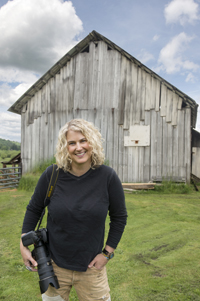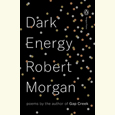Circular Perfection, Infinite Hope
Robin Layton’s photographs capture the origins of basketball dreams
A regulation basketball hoop is a metal circle measuring eighteen inches in diameter. To a basketball player, the rim possesses a simple perfection that requires no elaboration. It represents a challenge and an objective. The circle is tantalizingly open and yet frustratingly severe; it seems to welcome entry and yet denies errant forays. A rim evokes memories and dreams. For the basketball obsessive, hoops are everywhere.
 Robin Layton’s new book of photography, hoop: the american dream, captures the romance of basketball through images of lone baskets around the country. The subjects of the photos are as various as the people who play the game. They range from urban playgrounds to suburban parks to backboards nailed to the sides of Iowa barns. Together they convey the sport’s elegant dimensions and excite the aficionado into fresh fantasy.
Robin Layton’s new book of photography, hoop: the american dream, captures the romance of basketball through images of lone baskets around the country. The subjects of the photos are as various as the people who play the game. They range from urban playgrounds to suburban parks to backboards nailed to the sides of Iowa barns. Together they convey the sport’s elegant dimensions and excite the aficionado into fresh fantasy.
The “dream” of Layton’s subtitle accrues several meanings as the images pass by. The hoop itself is the focus of childhood dreams, as kids everywhere share the experience of being alone on the playground and imagining themselves in a championship game, their teams trailing by a point, the clock running down, as they take a pass on the wing and launch the winning shot. The dream is also indelibly American. As Jerry West writes in the book’s foreword, “Through these images of hoops—some mundane and abandoned, others celebrated—a breathtaking portrait of America emerges.” The images themselves often conjure a dream-state. Balls are rarely in the frame, and the height of the rim, which usually sits at an acute upward angle from Layton’s lens, draws viewers’ eyes to the world beyond: the images lead from the concrete reality of basketball into the infinite, ethereal realm of the mind.
Accompanying the photographs are brief remembrances from accomplished basketball players, many of them famous, each with a happy anecdote illustrating what the game has meant to them, especially during their childhoods. Playing hoops at the Boys & Girls Club in Newark, Shaquille O’Neal writes, “I learned how to become a people person, learned how to become a team player. I learned how to become a nice guy.” He also notes that on the court he learned to “become a protector,” leaving readers to imagine the massive O’Neal as the greatest “protector” ever to lace-up his high-tops in the Newark gyms.
At times the players’ remarks don’t do justice to the book’s evocative images. Layton shoots the “childhood hoop of LeBron James” from the Perkins Woods Pool in Akron, a sturdy metal backboard shot against a gray sky, and the setting suggests a grade-school LeBron experiencing his first triumph against older players, or coming back from a skinned palm and learning to shoot left-handed. Instead, James offers a platitude: “Basketball is so much more than a game. It is a mentor, a teacher, and a brotherhood.”
The book is a visual song of praise to the game itself. Danny Manning enjoyed playing by himself on outdoor courts to improve his skills: “I really liked that ‘cause it was just me and my imagination,” he writes. Layton’s hoop honors that simple thought by providing dozens of images that send players back to the courts of their own imaginations.
Robin Layton will discuss hoop: an American dream at Parnassus Books in Nashville on April 4 at 6:30 p.m.


